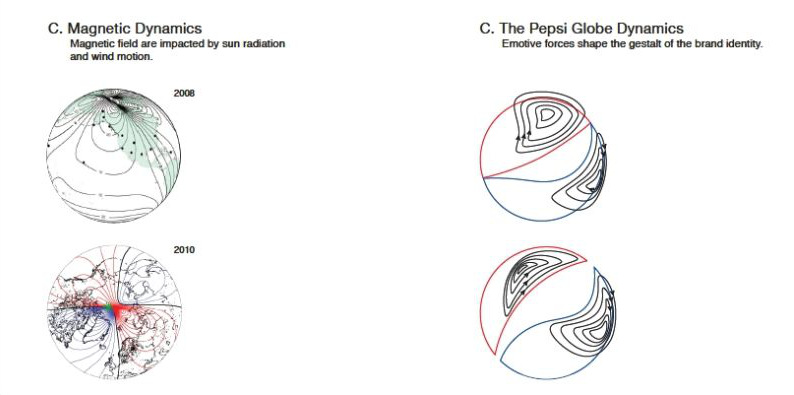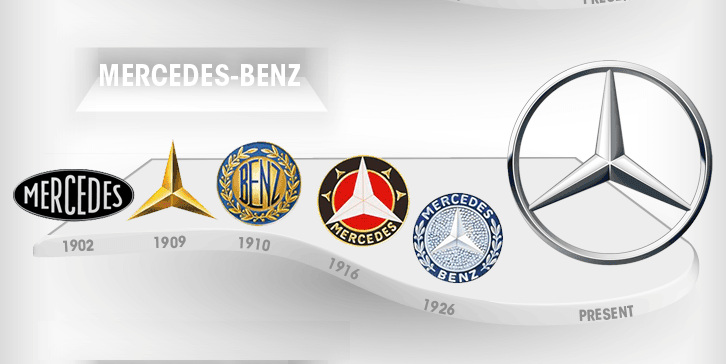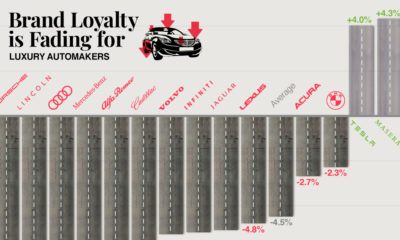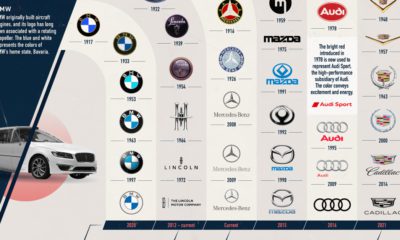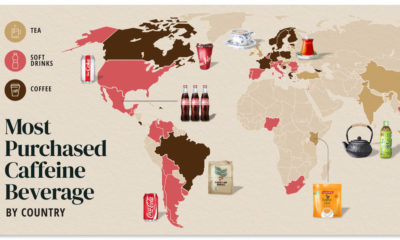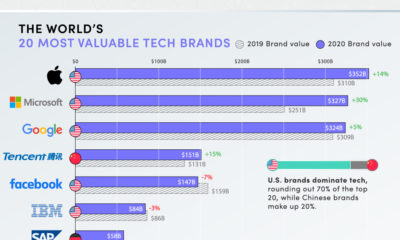Companies like Apple or Mercedes-Benz work endlessly to forge identities that allow them to be instantly recognizable to consumers. They want a logo that communicates their mission, value proposition, history, and legacy – and to do this, many of these companies continue to use icons, symbols, or colors that are decades old. But this doesn’t mean that their identities and logos are static. In fact, many of these world-class brands have actually changed dramatically, while still incorporating important elements from their company histories.
How Logos Evolve
This infographic comes to us from The Logo Company, and it is a compilation that shows how logos evolve over time:
Even today, many of the world’s most iconic companies have logos that pay tribute to their rich histories. And though some of the imagery may stay the same, the logos continue to evolve to reflect the values and new design aesthetics of modernity. For example, the identity of Royal Dutch Shell has been based around the image of a shell for well over a century. Between 1900 and 1930, the company represented itself by using realistic drawings of scallop and pecten shells:
The distinctive yellow and red colors were first added to service stations in 1915, and the shades eventually made it into the official logo itself by 1948. Today’s version of the Shell logo is ultra-simplified, and the brand is so recognizable that the logo often appears without the name of the company. Pepsi’s brand history is another great example of how logos evolve while still paying tribute to company origins. The signature red, white, and blue combination comes from 1941, when the company changed the colors of its bottle cap to support America’s war effort. Since then, the Pepsi logo has used some mix of these colors, usually with a globe and swirl involved. The most recent update to the logo in 2008 costed hundreds of millions of dollars, receiving heavy criticism from the design and business communities. However, for those that want to dive deeper, the rationale behind the redesign is quite interesting in itself.
Regardless, Pepsi’s brand has continued to evolve while maintaining at least some element of nostalgia from the company’s history. Whether it is effective or not is a story that will continue to be debated.
on Even while political regimes across these countries have changed over time, they’ve largely followed a few different types of governance. Today, every country can ultimately be classified into just nine broad forms of government systems. This map by Truman Du uses information from Wikipedia to map the government systems that rule the world today.
Countries By Type of Government
It’s important to note that this map charts government systems according to each country’s legal framework. Many countries have constitutions stating their de jure or legally recognized system of government, but their de facto or realized form of governance may be quite different. Here is a list of the stated government system of UN member states and observers as of January 2023: Let’s take a closer look at some of these systems.
Monarchies
Brought back into the spotlight after the death of Queen Elizabeth II of England in September 2022, this form of government has a single ruler. They carry titles from king and queen to sultan or emperor, and their government systems can be further divided into three modern types: constitutional, semi-constitutional, and absolute. A constitutional monarchy sees the monarch act as head of state within the parameters of a constitution, giving them little to no real power. For example, King Charles III is the head of 15 Commonwealth nations including Canada and Australia. However, each has their own head of government. On the other hand, a semi-constitutional monarchy lets the monarch or ruling royal family retain substantial political powers, as is the case in Jordan and Morocco. However, their monarchs still rule the country according to a democratic constitution and in concert with other institutions. Finally, an absolute monarchy is most like the monarchies of old, where the ruler has full power over governance, with modern examples including Saudi Arabia and Vatican City.
Republics
Unlike monarchies, the people hold the power in a republic government system, directly electing representatives to form government. Again, there are multiple types of modern republic governments: presidential, semi-presidential, and parliamentary. The presidential republic could be considered a direct progression from monarchies. This system has a strong and independent chief executive with extensive powers when it comes to domestic affairs and foreign policy. An example of this is the United States, where the President is both the head of state and the head of government. In a semi-presidential republic, the president is the head of state and has some executive powers that are independent of the legislature. However, the prime minister (or chancellor or equivalent title) is the head of government, responsible to the legislature along with the cabinet. Russia is a classic example of this type of government. The last type of republic system is parliamentary. In this system, the president is a figurehead, while the head of government holds real power and is validated by and accountable to the parliament. This type of system can be seen in Germany, Italy, and India and is akin to constitutional monarchies. It’s also important to point out that some parliamentary republic systems operate slightly differently. For example in South Africa, the president is both the head of state and government, but is elected directly by the legislature. This leaves them (and their ministries) potentially subject to parliamentary confidence.
One-Party State
Many of the systems above involve multiple political parties vying to rule and govern their respective countries. In a one-party state, also called a single-party state or single-party system, only one political party has the right to form government. All other political parties are either outlawed or only allowed limited participation in elections. In this system, a country’s head of state and head of government can be executive or ceremonial but political power is constitutionally linked to a single political movement. China is the most well-known example of this government system, with the General Secretary of the Communist Party of China ruling as the de facto leader since 1989.
Provisional
The final form of government is a provisional government formed as an interim or transitional government. In this system, an emergency governmental body is created to manage political transitions after the collapse of a government, or when a new state is formed. Often these evolve into fully constitutionalized systems, but sometimes they hold power for longer than expected. Some examples of countries that are considered provisional include Libya, Burkina Faso, and Chad.

